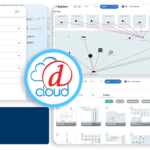There are a handful of vertical markets that are a bit more difficult to navigate and understand than others, but none seems to have more twists and turns and things to learn and understand than the control room market.
We talked to Lee Mandel of IntraLogic Solutions in Long Island, N.Y., and Tyler Bonner of Technical Innovation in Atlanta about what it takes to succeed in this tricky, but lucrative, area.
What are keys to succeeding the control room vertical market?
Lee Mandel, IntraLogic Solutions: Proper planning is key, and the cliché “measure twice, cut once” definitely applies here. That basically means you need to put in twice as much time planning as you do putting the system together. Another thing you have to remember is putting the cables in the proper places because you don’t have the opportunity to change that after they’re installed. Finally, bringing the various systems and departments together is just as important, if not more so, than providing all of those devices.
Click here for key takeaways on control room integration.
Tyler Bonner, Technical Innovation: It takes a good three or four years getting in to the market and becoming fluent in the industry. It’s not one that I’ve seen people be successful as a generalist. You have to really understand the client’s issues, whether it’s government, utilities, oil and gas, etc. We knew going in it was going to take some commitment.
What are the biggest differences between control room installations and other types?
Mandel: The biggest portion is construction-related. You’re a lot more involved with things like lighting, electrical, plumbing and cooling. Another thing is you’re building a room that’s 24/7 so it’s important to make sure you’re building in redundancies in power, data, cooling, etc. When push comes to shove, they need that room to be operational with zero down time, and you want to allow everyone to get what they want out of what you’re doing.
Four or five years ago, we picked small control room projects to learn more about the market. We knew there would be bumps along the way, but you have to remember to surround yourself with the right people and projects. Your first control room project shouldn’t be too big.
Bonner: There are more software-based solutions as everything’s becoming purely IP. There’s really no demand for a Crestron solution, an AMX solution, an Extron solution, anything like that. The other big difference is these sorts of solutions are more about business operations, monitoring and managing crisis situations.
How does the mission-critical nature of control rooms affect your approach?
Mandel: When you’re developing a command and control center, the first decision has to be whether it’ll be used day-to-day or only in times of catastrophe. When it’s in operation around the clock, all day every day, you have to think about building in those redundancies. When you’re talking about an emergency operations center that’s only for crisis situations, you’re more likely to have daily or monthly checks to make sure everything’s working the way it should.
Bonner: There’s more of an education process for ourselves and for people moving into the space. That helps you make stronger recommendations. Being focused on one space and understanding those operational challenges is somewhat unique. The entire team has a mission-critical state of mind. They don’t try to fit into an AV hole.
Are customers more interested in single-user desktop setups or large displays?
Mandel: We generally see a combination of both, where multiple people can push their content to a large video wall. The most successful installations tend to have 10 to 12 operators finding different types of information. That also applies in network operations centers (NOCs), data centers and for transportation and utility companies.
Bonner: Most control rooms rely on the desktop to make operations occur. Some want to enhance their video wall. This new generation of workers is very collaborative and very visual. Furniture, lighting and acoustics are also extremely important.












